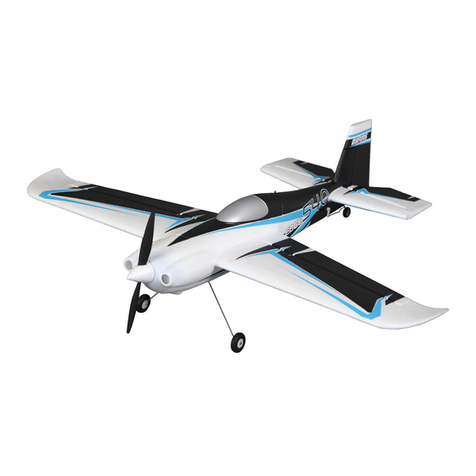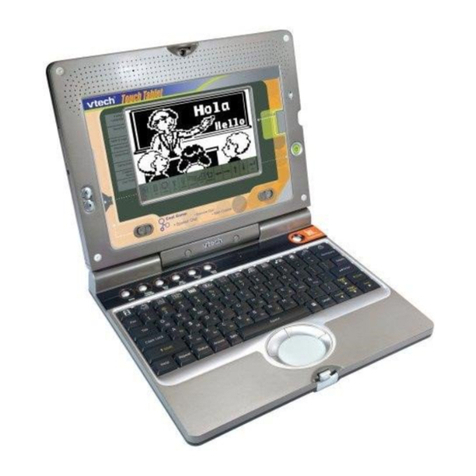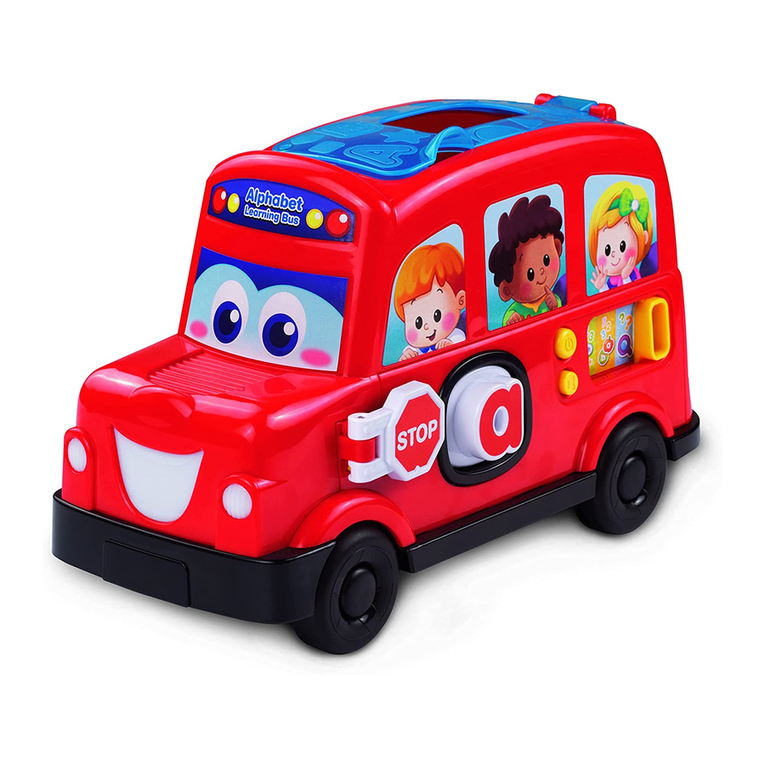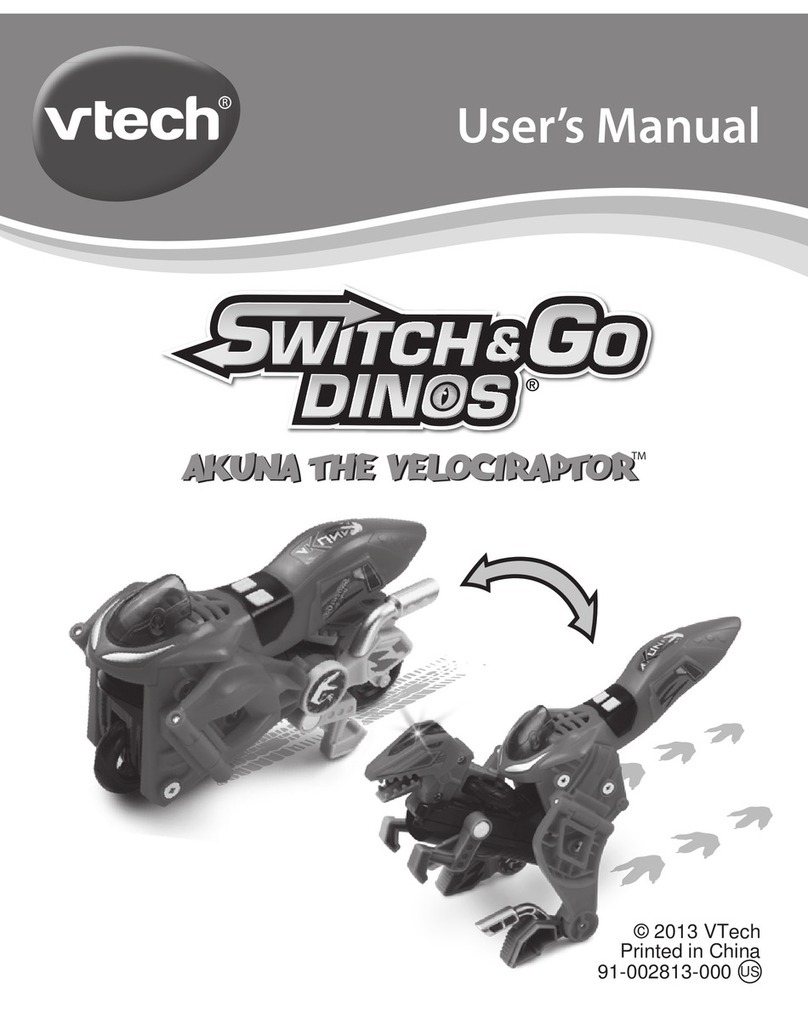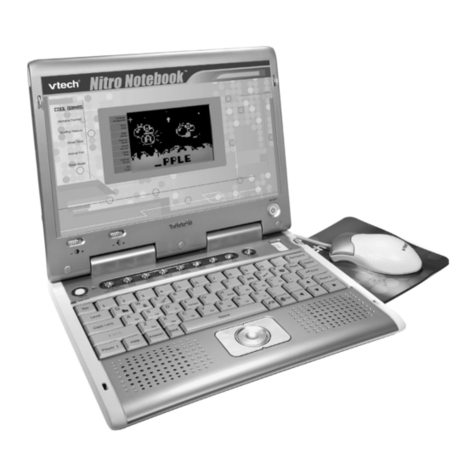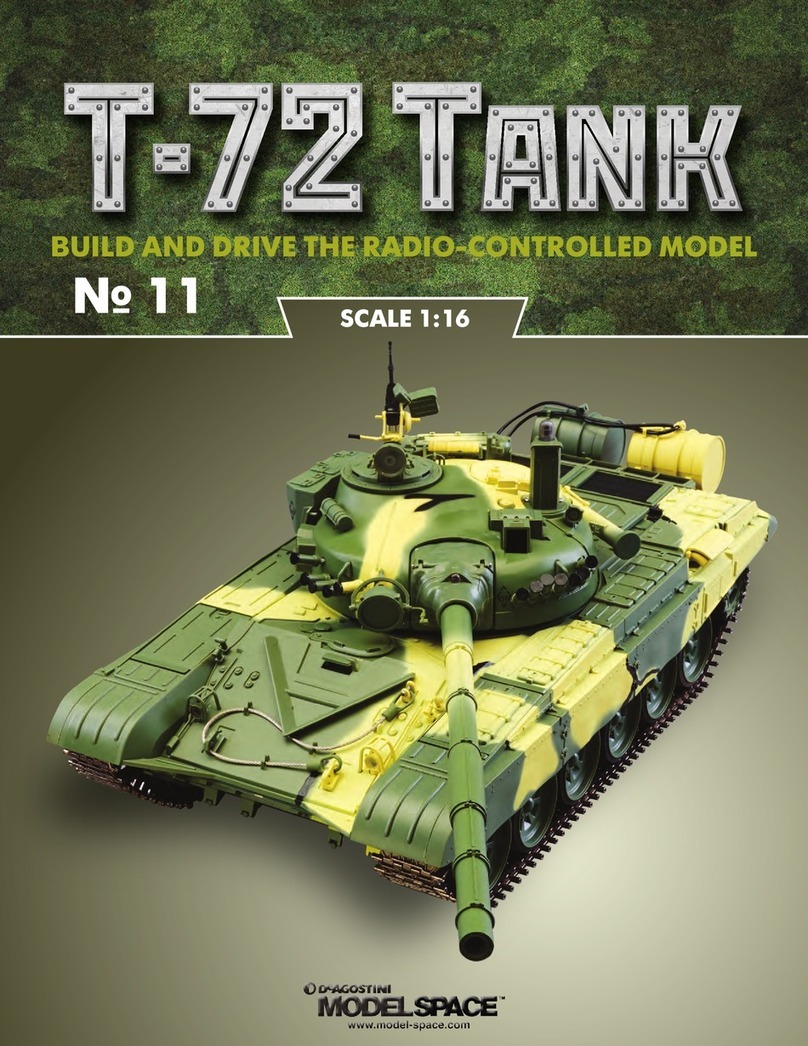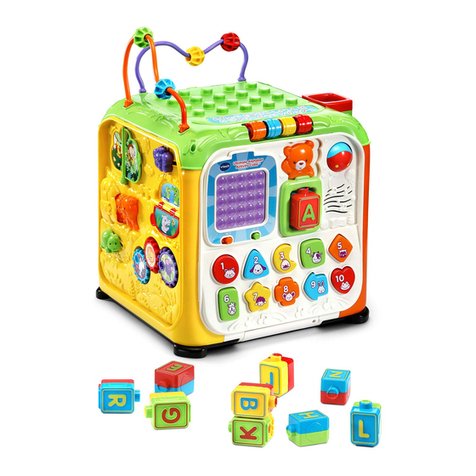BME Aircraft 37% Scale Ultimate Biplane User manual

BME Aircraft
37% Scale Ultimate Biplane
BME 37% Ultimate Ver 1.0 3/15/2004 Page 1

BME 37% Ultimate Ver 1.0 3/15/2004 Page 2

BME 37% Ultimate Ver 1.0 3/15/2004 Page 3
INTRODUCTION
Congratulations! You have just purchased an outstanding aerobatic aircraft in the form of the BME Aircraft
37% Ultimate Biplane. The Ultimate has long enjoyed a reputation of being one of the best flying RC aerobatic
designs in existence. This reputation was earned and well-proven over the years in what was perhaps the most
prestigious RC event in the world – the Tournament of Champions (TOC). The outstanding flight
characteristics of the Ultimate were recognized and demonstrated in the late 80's and early 90's when it was the
aircraft of choice for almost every TOC competitor and again in 2002 when the Ultimate was flown to 1st place
against the best pilots and RC aircraft in the world.
Until now the Ultimate has been readily available only in smaller sizes of 1.20 and below and most recently in
very large versions of 40% scale and above. To fill the large void of 100cc sized aircraft BME has introduced
the 37% Ultimate – just the right size to present well with the 40% monoplanes but a lot easier to handle than
the giants and a the perfect match for the new BME 110 Extreme engine!
SPECIFICATIONS
Wing Span 80.5"
Wing Area 2254 sq. in.
Weight 26-27 lbs. With
BME Extreme110
Wing Loading 26-28-oz./sq. ft.
Recommended Engine 100cc or Greater (lighter is better)
Construction Light Ply, Balsa, Foam & Fiberglass
Plug-in Wings Aluminum Spar Tubes
Plug-in Horizontal Stabs Aluminum Spar Tubes
Covering Monokote
Bottom Wing Incidence Zero (0) Degrees
Top Wing Incidence 1.5 Degrees Negative (preset by cabanes)
Engine Right Thrust Approximately 3 Degrees.
Engine Down Thrust 0 Degrees to +1 Degree
Elevator High Rates 20 degrees Up and Down
Elevator Low rates To Suit
Bottom Wing Aileron High Rates 25 Degrees Up and Down
Top Wing Aileron High Rates 20 Degrees Up and Down
Aileron Low Rates To Suit
Rudder Rates To Suit (rudder is very effective)
3D Rates Max All Surfaces and Adjust Down to Suit
Read through the instruction booklet and study the parts and photos to become familiar with the construction
before actually beginning work. The kit is highly prefabricated and the instructions detailed to guide you
through all major elements of the assembly processes.
Good Luck and Happy Flying!

ASSEMBLE CENTER CABANES
1. Refer to photos 1-3 and locate the 7 metal
cabane pieces consisting of 2 long
uprights, 2 short uprights, 2 diagonals and
1 center root rib.
2. Note that the two shorter uprights are
installed towards the front of the fuselage
while the longer uprights are installed
towards the rear. This provides the correct
amount of negative incidence for the top
wing. Also note that each upright has an
additional hole drilled towards one end.
The forward uprights have the hole
towards the top while the rear uprights
have the holes towards the bottom. See
photo 2.
3. Loosely bolt the uprights to the OUTSIDE
of the tabs that protrude through the top of
the fuselage using the supplied cap head
screws, nuts and lock washers. Be sure to
install the short uprights towards the front
of the fuse with the additional holes
towards the top and install long uprights
towards the rear with the extra holes
towards the bottom.
4. Loosely bolt the two diagonals between
the front and rear uprights as shown in the
photos. They are installed to the inside of
the uprights.
5. Install the metal root rib between the front
and rear uprights as shown in photo 3. It
is captured between the front and rear
uprights.
6. Tighten all nuts and bolts while keeping
the uprights vertical.
BME 37% Ultimate Ver 1.0
3/15/2004 Page 4

MOUNT THE WHEELS AND WHEEL PANTS ( This part will be revised with new style )
BME 37% Ultimate Ver 1.0
3/15/2004 Page 5
1. Refer to photos 4-8 and locate the landing
gear, wheels, wheel pants, axles, wheel
collars and wheel pant mounting screws as
shown in photo 4.
2. Enlarge the existing hole on the inner side
of each wheel pant so that the axle nut will
just pass through the hole. Use
progressively larger drill bits to enlarge
the hole to help prevent chipping and to
keep the hole centered. See photo 5.
3. On the outer side of each wheel pant is a
molded depression. Drill a hole in each
wheel pant at this location that is large
enough for the head of the axle to pass
through. This hole will help with the
assembly process and final adjustment.
4. Referring to photo 6, assemble the
axle/wheel assemblies as follows: Take
an axle, slip a washer onto the axle
followed by a wheel, another washer and a
wheel collar. Do not tighten the wheel
collar yet and do not put the nuts on the
axles.
5. Slide the assembly into a wheel pant by
holding the wheel over the opening of the
wheel pant, pushing the head of the axle
screw into the wheel pant cut out and out
the hole on the outside of the wheel pant.
Pull the head of the screw outward until
the other end of the axle with the wheel
collar will drop into the opening where it
can be pushed through the hole in the
inner wheel pant side.
6. Thread an axle nut onto the axle such that
the flange part of the nut is facing toward
the end of the threads as shown in photo 6.
Thread the nut on so that approximately
5/8" of the threads are showing.

7. Note, The landing gear on the Ultimate
are swept rearwards. In other words,
they slant towards the rear of the
airplane when viewing from the side.
Keeping this in mind identify the right
and left gear legs and wheel pant
assemblies. Take one assembly and
push the axle threads through the axle
hole in the aluminum landing gear and
install the other flanged nut to secure it
to the landing gear.
8. Mount the wheel pants to the landing
gear legs using the screws provided.
There are 2 screws for each wheel pant
and the holes have already been drilled
in the pants and the blind nuts have
already been installed at the factory
9. The axle will need to be adjusted
inward/outward in order to position the
wheel in the cut out. The adjustment is
performed by screwing the axle in and
out of the landing gear leg using a
Phillips screwdriver through the hole in
the outer wheel pant side. Once it is in
the correct position the wheel collar may
be tightened to secure the wheel in the
proper location. The wheel is captured
by the screw head of the axle on one
side and the wheel collar on the other
side.
10. Check all clearances to ensure that the wheels will not rub against the cut outs. If more clearance is
required enlarge the cut outs using a Dremel tool (use a mask!). When everything fits correctly and
there is adequate clearance between the wheel and wheel pant, tighten the axle nuts securely. It is a
good idea to use a thread-locking compound such as red Loctite to prevent the axle nuts from
coming loose.
BME 37% Ultimate Ver 1.0 3/15/2004 Page 6

MOUNT THE LANDING GEAR TO THE FUSELAGE
1. Refer to photo 9 and locate the holes for the
landing gear mounting screws underneath
the covering. Pressing firmly with a finger
will allow feeling the holes under the
covering.
2. Using a sharp Exacto blade cut the covering
from each hole.
3. Install the landing gear using 4 socket head
bolts, lock washers and flat washers as
shown in photo 10. The blind nuts have
already been installed at the factory. Thread
locking compound may be used to ensure
that the mounting bolts do not come loose
from vibration.
MOUNT THE TAIL WHEEL BRACKET TO THE FUSELAGE
1. Refer to photo 11 and locate the hole for the
tail wheel bracket underneath the covering
at the rear of the fuse. Pressing firmly with
a finger will allow feeling the hole under the
covering.
2. Using a sharp Exacto blade cut the covering
from the hole.
BME 37% Ultimate Ver 1.0
3/15/2004 Page 7

3. Test fit the tail wheel bracket into the hole.
It may be necessary to remove the paint
from the bracket and/or to radius the rear of
the hole to accept the bracket.
4. Once the bracket fits all the way down into
the hole secure it with the 2 formed straps
and sheet metal screws as shown on photo
12.
5. Install the tail wheel on the tail wheel mount
using the supplied wheel collar as shown in
photo 13.
UNCOVER SERVO CUT OUTS AND SERVO
LEAD EXITS IN WING PANELS AND MOUNT
AILERON SERVOS.
1. Refer to photo 14 and locate the holes for
the Aileron Servos underneath the covering
on the bottom of the bottom wing. Trim the
covering and use a trim iron to tuck the
covering down into the servo holes As
shown in photo 14
BME 37% Ultimate Ver 1.0 3/15/2004 Page 8

2. Locate the servo lead exit holes on the
top of the bottom wing between the two
strut mounting tabs. Cut the covering
over the holes and use a trim iron to tuck
the covering down into the holes as
shown in photo 15. These holes are
where the servo extensions for the servos
in the top wing panels will be connected
as they pass up through the wing struts on
their way to the servos in the top wing
panels.
3. Thread 2 servo extensions through each
bottom wing panel from the wing root.
One extension exits the hole in the top of
the wing panel, which will later be
connected through the strut to the servo in
the top wing panel. The 2nd extension is
plugged into the servo in the bottom wing
panel. Mount the aileron servos in the
bottom wing panels after running both
extensions through each panel. See
photos 16 & 17. Note: All aileron servo
arms must point towards the wing tips in
order to line up with the hard points
embedded in the ailerons.
BME 37% Ultimate Ver 1.0
3/15/2004 Page 9

4. Locate the servo cut out and servo lead
exit holes on the bottom of the top wing.
Cut the covering over the holes and use
a trim iron to tuck the covering down
into the holes as shown in photo 18.
5. Mount the aileron servos in the bottom
of the top wing and route the servo leads
out through the exit holes as shown in
photo 19. Note: all aileron servo arms
must point towards the wing tips to
ensure lining up with the embedded hard
points in the ailerons.
BME 37% Ultimate Ver 1.0 3/15/2004 Page 10

INSTALL FLYING WIRES
1. Refer to photo 20 and locate the flying
Wire hardware consisting of steel cable,
12 angle brackets, 8 clevises, 8 rigging
connectors and 16 ferrules. Note: the
angle brackets are bent at 90 degrees at
the factory. They should be un-bent some
so that they align with the attach points
as illustrated in subsequent photos 32,
33, 34.
2. Locate the holes under the covering in the
sides of the fuselage where the flying
wire brackets will be attached and
remove the covering from the holes as
shown in photo 21.
3. Locate the holes under the covering on
the inside of the wing struts where the
flying wire brackets will be attached and
remove the covering from the holes as
shown in photos 22 and 23. Also note
that the struts have been marked right/left
and top/bottom. Transfer these notations
to the exposed ends of the tops and
bottoms of the struts for a permanent
reference.
BME 37% Ultimate Ver 1.0 3/15/2004 Page 11

4. Locate the top right wing panel and the
bottom right wing panel (the bottom wing
panel has the plywood strut mounting tabs
on the top/colored surface while the top
panels have the tabs on the plain bottom
surface). We are going to fasten the spar
tubes into one top and one bottom wing
panel. Once this is done, do not remove
the spars from these panels unless
necessary. Always leaving the spars
secured in one wing panel greatly
simplifies the assembly process for each
flying session.
5. The spar tubes have already been drilled
and tapped for the retaining screws. They
have also been marked top or bottom and left or right. Transfer the markings to the inside of the
tubes at the ends using a permanent marker so as to not lose track of spar tube orientation.
6. Slip the right end of the top spar tube into
the top right wing panel while trying to
keep the tapped hole in the tube oriented
towards the surface where the hole is
already drilled in the wing panel. Push the
tube all the way in. Poke a piece of wire
or small tool through the hole in the wing
panel and very carefully adjust the tube
until the tapped hole in the tube is aligned
with the hole in the wing panel. When it
is aligned, insert a cap head screw and
carefully thread it into the wing securing
the spar tube. Repeat for bottom right ring
panel and bottom spar tube. Note: When
assembling the aircraft to fly the other
wing panels are secured to the spar tube
with another 4-40 bolt each.
If for some reason the holes do not line up properly new holes can be made as follows. Push the
spar tube all the way into one wing panel and rotate it so that the existing hole is facing either
forwards or rearwards. Using the hole in the wing panel as a guide, drill a new hole in the spar tube
using a #43 drill bit (4-40 tap drill) and tap the hole with a 4-40 tap without removing the tube from
the wing panel. Now slide the other wing panel onto the spar tube while mounted to the fuselage
and when positioned properly, drill a hole in the spar tube with a #43 drill bit and tap this hole with a
4-40 tap.
BME 37% Ultimate Ver 1.0 3/15/2004 Page 12

7. Using cap head screws and lock washers,
fasten a flying wire bracket to each fuse
side in the holes uncovered during a
previous step. See photo 25.
8. Temporarily remove the cap head screw
that was used to mount the rear of the
metal rib to the cabanes. Slip a flying
wire bracket onto the screw, slide the
screw back through the cabanes and
metal rib, slide another flying wire
bracket onto the screw and then thread
the nut onto the screw to hold everything
securely. There should now be a flying
wire bracket attached to each side of the
cabane/metal rib assembly as shown in
photo 26 (the bracket on the other side is
not visible in the photo).
9. Mount the bottom right wing panel by carefully slipping the spar tube into the hole in right side of
the fuselage. Push all the way in until the anti-rotation pin engages the hole in the fuse side. Now
slip the left bottom wing panel onto the spar protruding through the left side of the fuse. Install the
4-40 cap head screw into the bottom of the bottom wing panel to hold it in place.
10. Mount the top right wing panel by Carefully sliding the spar tube through the metal rib attached to
the center cabanes. When it is pushed all of the way on, insert the right strut onto its mounting tabs
in the top and bottom right wing panels to support the top wing half. Be sure to observe the marks
transferred on the struts indicating right/left and top/bottom. Now carefully slip the top left wing
panel onto the spar tube and push all the way on. Insert the left strut between the top and bottom
wing panels, again observing strut polarity. Install the 4-40 cap head screw in the bottom of the top
wing top hold in place
BME 37% Ultimate Ver 1.0 3/15/2004 Page 13

11. Using cap head screws and lock washers,
attach flying wire brackets to the inside
of the tops and bottoms of the struts. The
brackets are towards the inside facing the
fuselage. The screws also fasten the
struts to the top and bottom wing panels.
See photos 27 & 28
12. Locate the steel cable, a rigging connector
and a ferule (See photo 29). Slide the
ferule over the cable, thread the cable
through the rigging connector and then
thread the cable back through the ferule as
shown in the photo.
BME 37% Ultimate Ver 1.0 3/15/2004 Page 14

13. Crimp the ferule with a pair of pliers as
shown in photo 30.
14. Thread a clevis onto the rigging
connector until the threads of the clevis
are fully occupied. See photo 31.
BME 37% Ultimate Ver 1.0 3/15/2004 Page 15
15. Attach the clevis to the forward bracket at
the top of the right wing strut as shown in
photo 32. Put thick CA on the assembly
from the cable attach point down to the far
end of the crimped ferule and use
accelerator to harden. Doing this will
keep the assembly stiff, transferring
vibration and flexing down the cable and
will help prevent the cable breaking at the
attach point.

16. Stretch the cable down to the bracket that
is fastened to the fuse side and cut the
cable to length to allow for going through
the bracket and then back through the
ferule.
17. Slip a ferule over the cable, thread the
cable through the bracket and then back
through the ferule. Pull the cable fairly
tight (a little slack is ok) and crimp the
ferule securing the cable as shown in
photos 33 & 33a. Put thick CA on the
crimped ferule to help keep secure.
18. Now remove the clevis from the strut and
screw it on a few turns to remove the
slack from the cable. Then re-attach the
clevis to the strut bracket. The cables
should not be too tight – just tight enough
to get rid of any slack.
19. Make up another flying wire and attach it
to the rear bracket at the top of the right
wing strut. The other end is attached to
the same bracket mounted on the fuse
side as shown in photo 34. Put thick CA
on the ferule to help secure the cable.
BME 37% Ultimate Ver 1.0 3/15/2004 Page 16

20. Now make up 2 more flying wires and
attach them to the lower brackets on the
right strut and connect the other end to
the bracket attached the center cabanes as
shown in photo 35.
21. Repeat steps 41-49 to assemble and
install the 4 flying wires for the left wing
panels and strut.
INSTALL AILERON HINGES
1. The aileron hinge holes have already
been drilled in the wings and ailerons.
However they probably do not fit all of
the way into the ailerons or wing trailing
edge yet. The hinge holes need to be
made square because the hinge points
have a square profile where they exit the
ailerons and wing trailing edge. To
square the holes at their exits (see Photo
35a) take a hinge and a small hammer
and lightly tap the hinge into the trailing
edge of the wing until the rivet is half
way embedded in the bevel in the trailing
edge (see Photo 35b). You may need to
cut the holes with a hobby knife. Now do
the same thing to the holes in the aileron
until the rivet is half covered by the bevel
in the aileron. Test fit the ailerons to the
wings and adjust the holes and hinge
lines (mash down the high spots if
necessary) until there is no gap between
the ailerons and wing trailing edges.
2. Glue the hinges into the ailerons first,
making sure that each hinge is inserted
the same amount and that the rivet is half
way embedded into the bevel (like in
Photo 35b). Use epoxy, polyurethane or
Pacer Hinge Glue to glue the hinges.
Once the glue is set, test the fit again and
when satisfied, glue the hinges into the
wing trailing edge. Use masking tape or
large rubber bands to hold the ailerons
tight against the trailing edges while the
glue cures.
3. Repeat for all ailerons.
BME 37% Ultimate Ver 1.0 3/15/2004 Page 17

INSTALL AILERON CONTROL HORNS AND LINKAGES
1. The builder may install the control horns
of choice. We have used the Rocket City
4-40 HD ball links and 8-32 swivel links
as illustrated in the photos.
BME 37% Ultimate Ver 1.0 3/15/2004 Page 18
2. With the servo arm pointed towards the
wing tip and positioned at 90 degrees to
the servo case, draw a line that is 90
degrees to the arm straight back onto the
aileron. The line should be aligned with
one of the holes in the servo arm. See
Photo 36.
3. There is a hard point embedded in the
aileron just behind the aileron leading
edge. This is where your control horn
(screw) must be positioned. If using the
Rocket City Swivel Links, drill and tap the hole about 1/2" behind the bevel on the leading edge of
the aileron to ensure it is in the hard point. If using another type of control horn, make sure it is
mounted on the hard point. You may locate the location of the hard point by poking with a fine pin.
4. Assemble and install the 4 aileron linkages
as shown in photo 37.

CUT COVERING FROM SERVO MOUNTS IN THE HORIZONTAL STABILIZERS AND HINGE
THE ELEVATORS
1. Locate the holes for the Elevator Servos
underneath the covering on the bottom of
the horizontal stabs. Trim the covering
and use a trim iron to tuck the covering
down into the servo holes as shown in
photo 38.
2. The elevator hinge holes have already
been drilled in the stabs and elevators but
they probably do not fit all of the way into
the stabs or elevators yet. The hinge holes
need to be made square like they were for
the ailerons. To square the holes at their
exits (see Photo 35a) take a hinge and a
small hammer and lightly tap the hinge
into the trailing edge of the stab until the
rivet is half way embedded in the bevel in
the trailing edge (see Photo 40). You may
need to cut the holes with a hobby knife.
Now do the same thing to the holes in the
elevators until the rivet is half covered by
the bevel in the elevator. Test fit the
elevators to the stabs and adjust the holes
and hinge lines (mash down the high spots
if necessary) until there is no gap between
the elevators and stab trailing edges.
3. Glue the hinges into the elevators first,
making sure that each hinge is inserted the
same amount and that the rivet is half way
embedded into the bevel (like in Photo
40). Use epoxy, polyurethane or Pacer
Hinge Glue to glue the hinges. Once the
glue is set, test the fit again and when
satisfied, glue the hinges into the stab
trailing edge. Use masking tape or large
rubber bands to hold the elevators tight
against the trailing edges while the glue
cures.
BME 37% Ultimate Ver 1.0
3/15/2004 Page 19

MOUNT ELEVATOR SERVOS AND INSTALL LINKAGES
1. Mount the elevator servos and bring the
servo lead out of the hole in the stab root
as shown in photo 41. Note that the servo
arm points towards the stab tip.
2. With the servo arm pointed towards the
stab tip and positioned at 90 degrees to the
servo case, draw a line that is 90 degrees
to the arm straight back onto the elevator.
The line should be aligned with one of the
holes in the servo arm. See Photo 42.
3. There is a hard point embedded in the
elevator just behind the elevator leading
edge. This is where the control horn
(screw) must be positioned. If using the
Rocket City Swivel Links, drill and tap the
hole about 1/2" behind the bevel on the
leading edge of the elevator to ensure it is
in the hard point. If using another type of
control horn, make sure it is mounted on
the hard point. You may locate the actual
location of the hard point by poking with a
fine pin - see photo 43.
BME 37% Ultimate Ver 1.0
3/15/2004 Page 20
Table of contents
Other BME Aircraft Toy manuals
Popular Toy manuals by other brands

KNEX
KNEX ORANGE COUNTY CHOPPERS MIKEY'S ALL-STAR BIKE manual
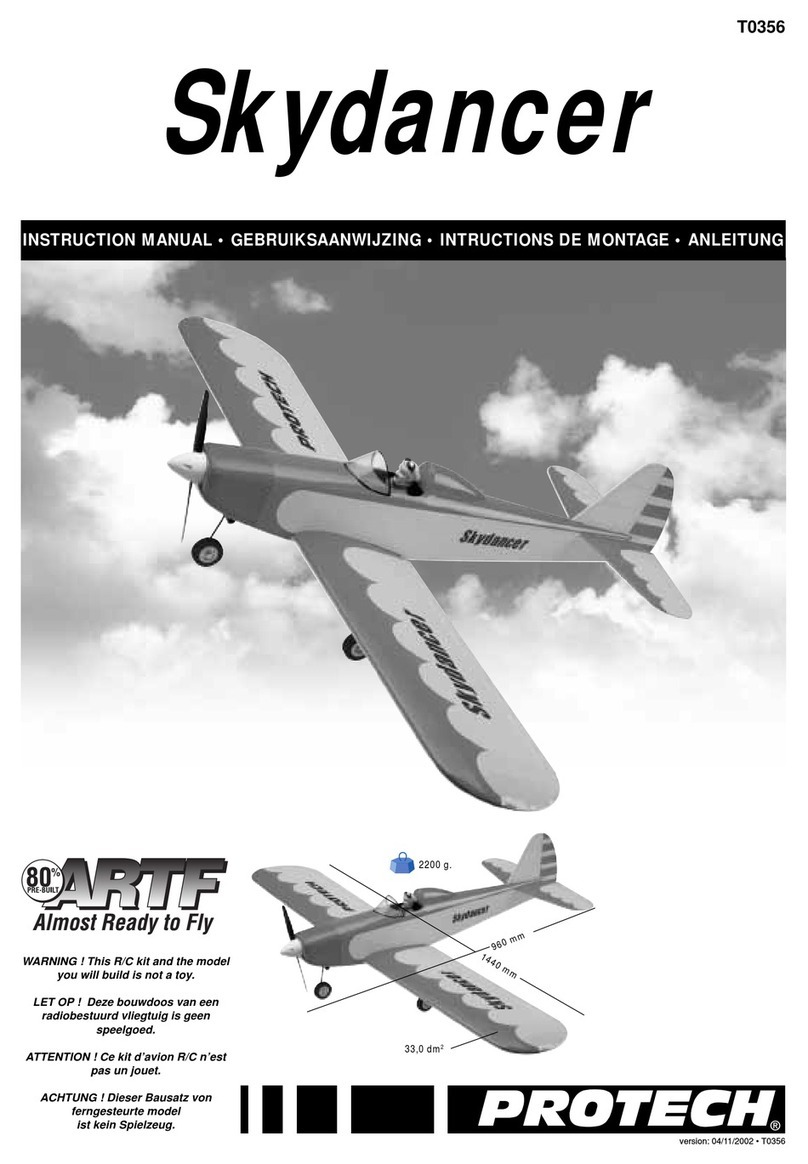
protech
protech Skydancer instruction manual
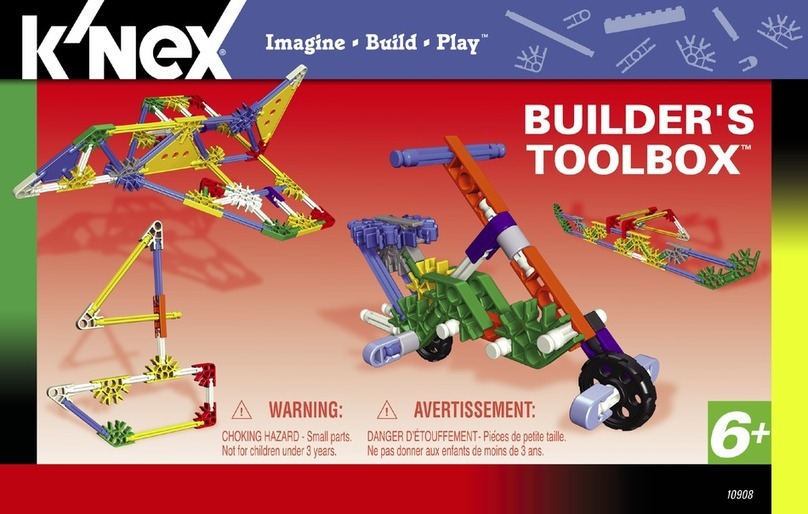
KNEX
KNEX Imagine-Build-Play BUILDER'S TOOLBOX manual

Spinmaster
Spinmaster Moon Dough Big Barn Instruction guide
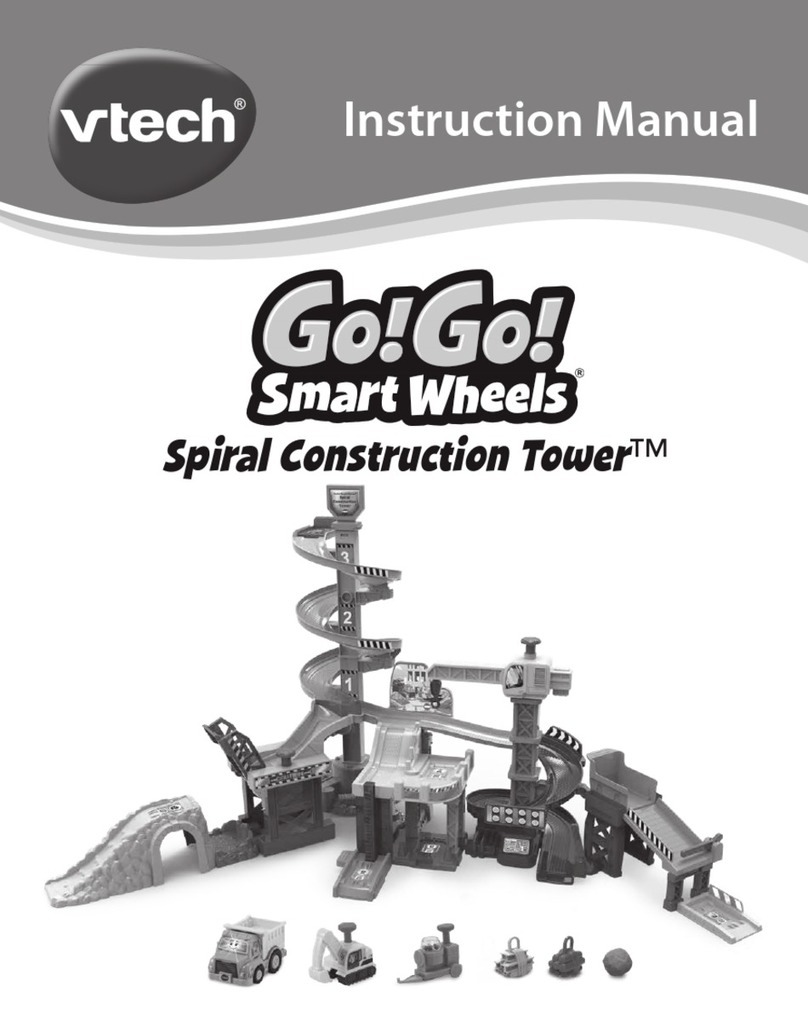
V-tech
V-tech Go! Go! Smart Wheels Spiral Construction... instruction manual

V-tech
V-tech Kidizoom camera Connect user manual
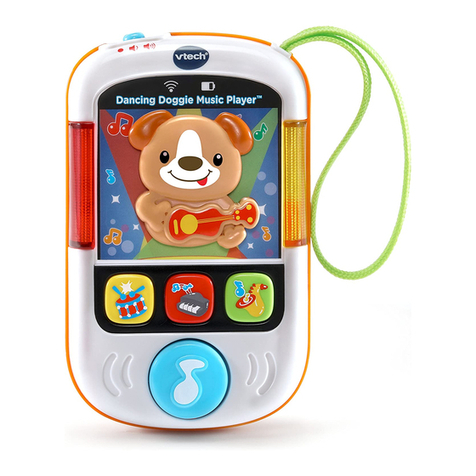
V-tech
V-tech Dancing Doggie Music Player Parents' guide
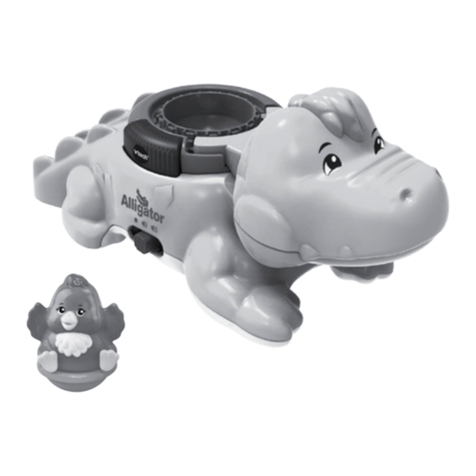
V-tech
V-tech Zombizooz Alligator Parents' guide
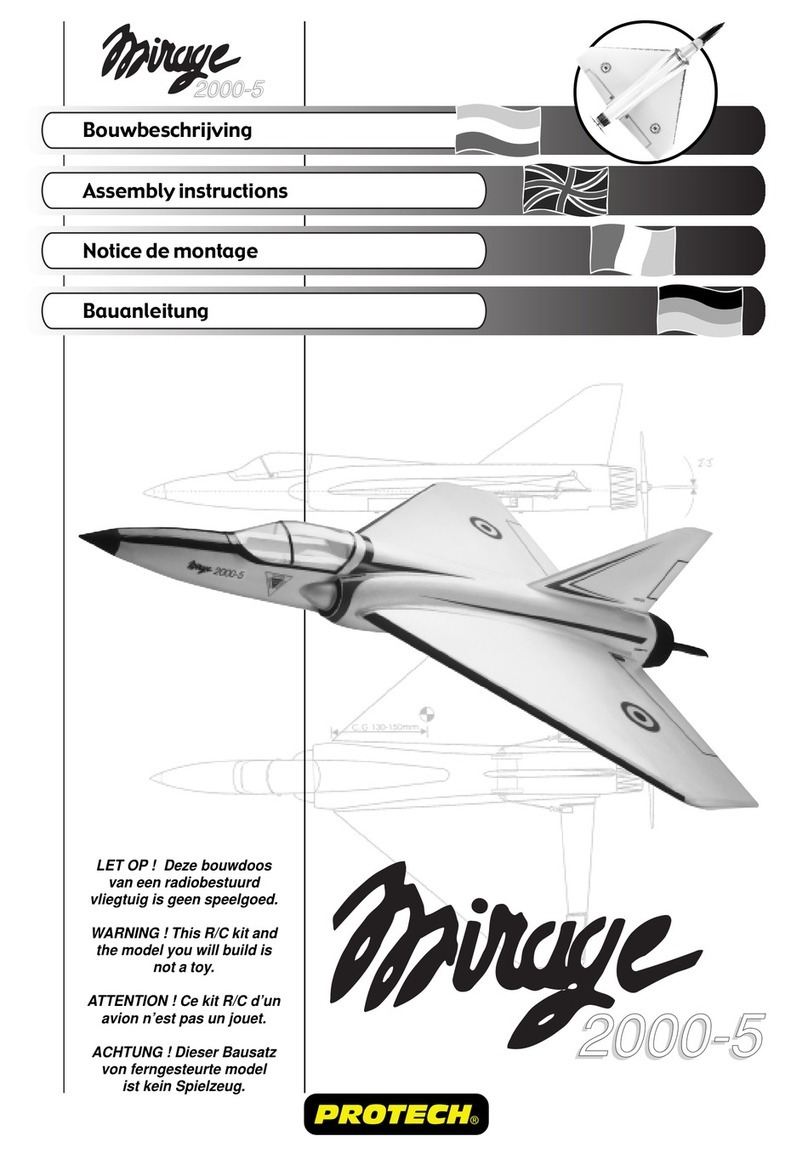
protech
protech MIRAGE 2000-5 Assembly instructions

LaserPegs
LaserPegs NG200 ANIMALS Caribou Model instructions
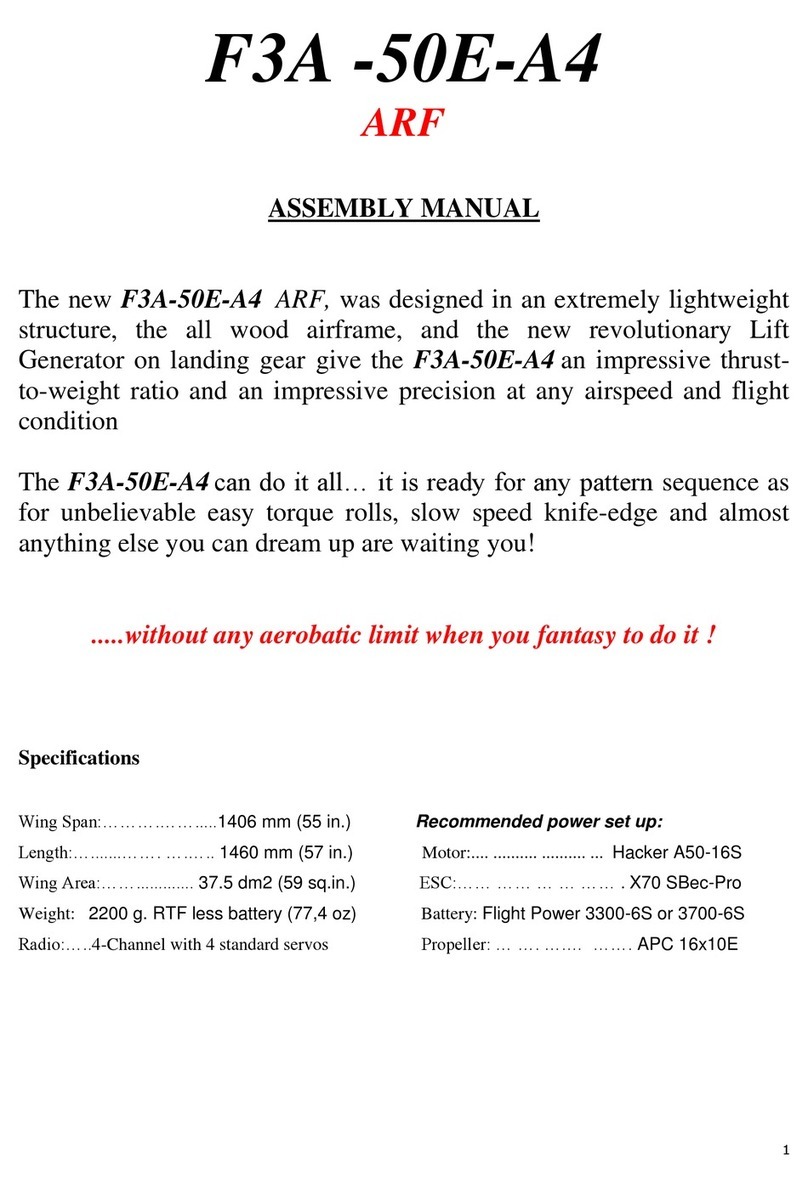
Sebart
Sebart F3A-50E-A4 Assembly manual
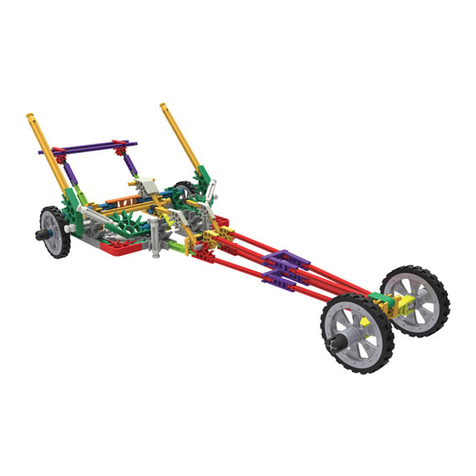
KNEX
KNEX 55 MODEL SUPER VALUE BUILDING SET Building instructions

